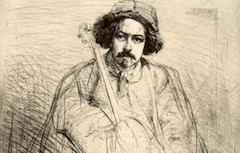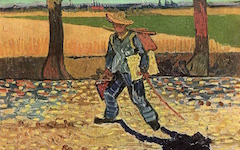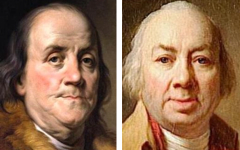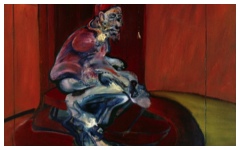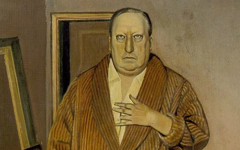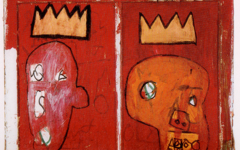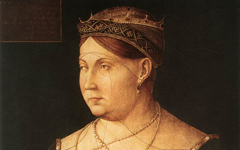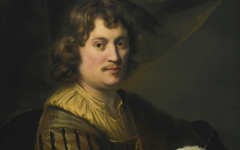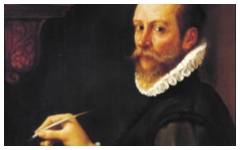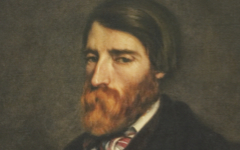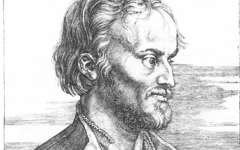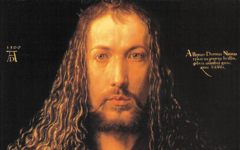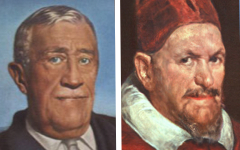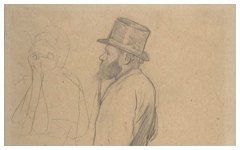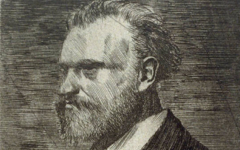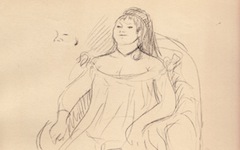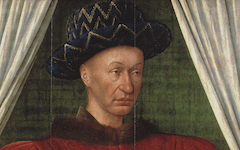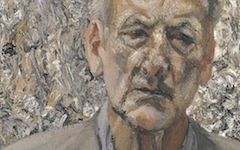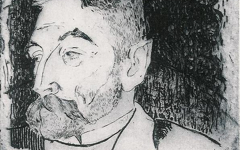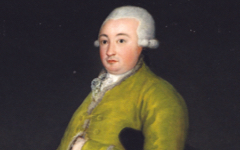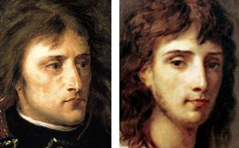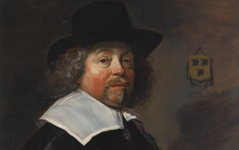Portraiture
Great portraiture is one of art’s many surprises. Portraits, of course, have long been considered historical documents of what the sitter looked like but EPPH suspects, despite most opinion over the centuries claiming otherwise, that an accurate likeness was rarely the primary goal of a great portraitist. And while a painter-poet (our definition of an artist who paints) can depict a sitter as his or her own alter ego in many different ways (see THEMES) , one of the most common and intriguing, it seems to me, is the fusion of the artist's own facial features with the sitter's. The evidence available is fairly abundant and far exceeds the content of this site to-date. First of all, we are not alone. Other art historians have noticed the phenomenon too (see below). The most compelling example is the portrait series of British monarchs from Holbein's Henry VIII to Lucian Freud's Elizabeth II. You can judge for yourself in the gallery of English sovreigns and other famous Brits. There are similar selections on Italian, Spanish, French and American portraiture as well. The series of early American presidents is another eye-opener.
Most Recent Articles
Look at art from every which way you can. You never know what you might see.
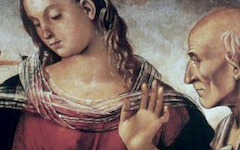
Signorelli’s Virgin & Child with John the Baptist and Donor (c.1491-4)
All Articles (Alphabetical by Artist, then Title)
If it looks odd, there must be a reason. See Balthus horsing around.
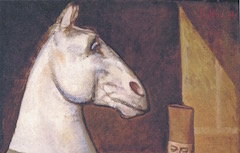
Balthus’ The Moroccan Rider with His Horse (1935)
In a short addendum to Part 1, see how Balthus conveyed his alter ego
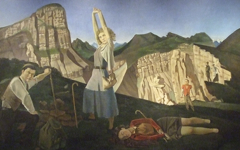
Balthus’ The Mountain (1937) Part 2
Learn how to deconstruct a portrait by Balthus using a few simple principles
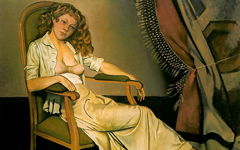
Balthus’ The White Skirt (1937)
See how Basquiat's Boone turns facial resemblance on its head and becomes Basquiat.

Basquiat’s Boone (1983)
This masterpiece, like many before and since, must have been the source of inspiration for Picasso's Cubism. As unlikely as that may sound, it all depends on what you can see in The Birth of Venus that experts never have. You'll be one of the first...
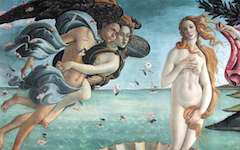
Botticelli’s Birth of Venus (1484-6): Part Two
How others have already recognized Cézanne's late portraits as "portraits" of himself.
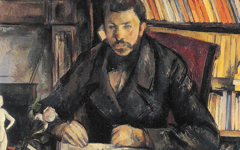
Cézanne’s Portrait of Geffroy (1895) and later portraits
If you look carefully, you will be amazed at what you can find
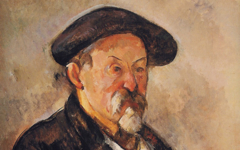
Cézanne’s Self-Portrait with a Beret (1898-9)
See how Caravaggio's iconic painting makes art's basic paradigm crystal clear
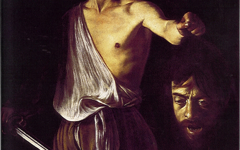
Caravaggio’s David with the Head of Goliath (1610)
Don't let the belief that Caravaggio was a Realist lead you to think each of his faces has a different identity.
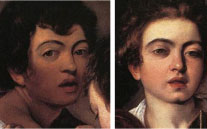
Caravaggio’s Faces
If a painting looks as though there are two realities, as here, the answer is often the same

Carpaccio’s Young Knight in a Landscape (1510)
Even a minor sketch does not escape a great artist's need to identify
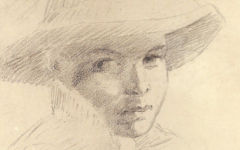
Courbet’s Portrait of a Young Boy
Find out how the colloquial term for a female rider inspired an artist
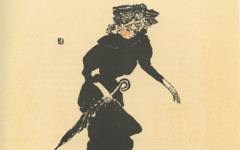
Courbet’s Woman in a Riding Habit or The Amazon (1856)
Cranach saw a resemblance in someone else's work and made it his own, a common practice in poetic art
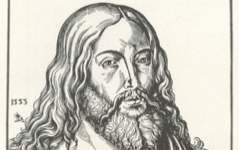
Cranach’s Form of the Body of ...Jesus (1553)
See how Durer shaped the Virgin and Child into the form of his own monogram
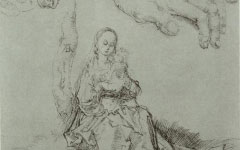
Dürer’s Virgin and Child (c.1491)
See how Degas subtly changed his copies after the Old Masters to fit his own (and art's) agenda
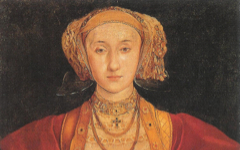
Degas’ Copy after Holbein’s Anne of Cleves (c.1860)
Is Degas' Little Dancer just a dancer, a study in realism? Or is she......?
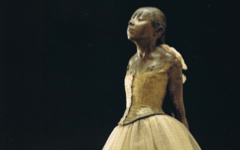
Degas’ Little Dancer Aged Fourteen (1879-81)
Find out how Eakins' portrait of his father becomes one of himself
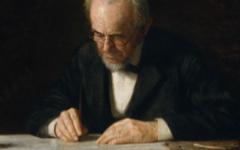
Eakins’ The Writing Master (1882)
See how a contemporary artist still uses the language of the great masters
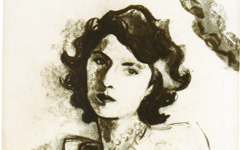
Elizabeth Peyton’s Portraits (1991-)
See a concise statement in mid sixteenth-century England of how every painter paints himself
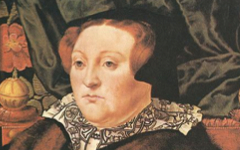
Eworth’s Mary Neville, Lady Dacre (1555-8)
Fouquet's king, Bernini's Richelieu and Rigaud's Louis XIV have more in common with your innermost self than you probably realize
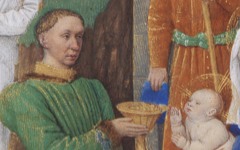
Fouquet’s Charles VII, Bernini’s Richelieu and Rigaud’s Louis XIV
See how Hals used his monogram to signal an alter ego
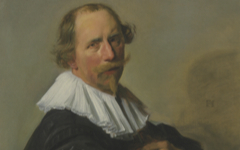
Frans Hals’ Portrait of a Gentleman, half-length, in a black coat (early 1630’s)
Keep an eye out for the poses of painting because......
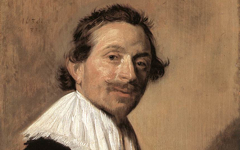
Frans Hals’ Portrait of Jean de la Chambre (c.1634)
See how one of England's most famous paintings is not what everyone thinks
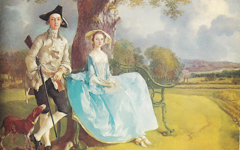
Gainsborough’s Mr and Mrs Robert Andrews (c. 1748-9)
Learn how an artist can link himself through music to great painters before him
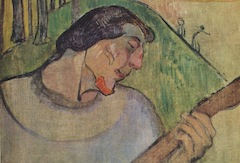
Gauguin’s Self-portrait with a Mandolin (1889) and The Player Schneklud (1894)
What you can see in a self-portrait when you think creatively. Indeed it's your job to become the painter...
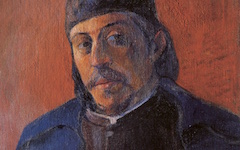
Gauguin’s Self-portrait with a Palette (c.1893-4)
Self-representation was as common in the early 15th century as the 20th and today
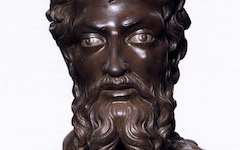
Ghiberti’s St. John the Baptist (1412-16)
Conventional scholars sometimes recognize in a single work of art what we show is common in art generally.
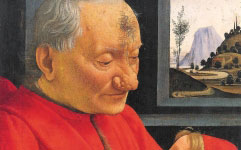
Ghirlandaio’s Portrait of an Old Man and Child (c.1490)
Even at 17, Giacometti understood the hidden meaning of art
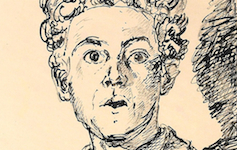
Giacometti’s Self-portrait with Brush (1918)
If you think like the artist and think inwards, all changes...
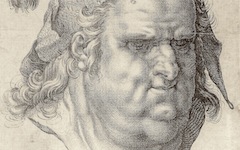
Goltzius’ Man Wearing a Tasseled Cap (1587)
Don't confuse illusion with likeness in portraits; they are different
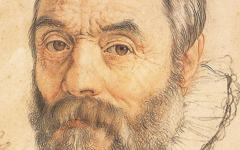
Goltzius’ Portrait of Giambologna (1591) and Palma Giovane (1591)
Think about who you are if, for instance, you are not yourself
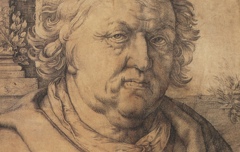
Goltzius’ Portrait of Jan Govertsz van der Aar as St. Luke (1614)
Don't take a portrait at face value because art is never quite what it seems
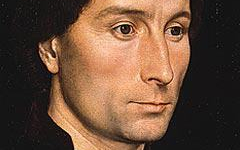
Hans Memling’s Portrait of Tommaso di Folco Portinari (c. 1470)
Sent on a mission to paint a potential queen for the blood-thirsty and dangerous Henry VIII, how did Holbein "paint" himself in painting the future Queen?
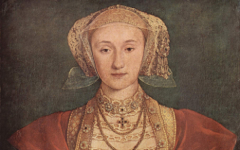
Holbein’s Anne of Cleves (c.1539)
© Simon Abrahams. Articles on this site are the copyright of Simon Abrahams. To use copyrighted material in print or other media for purposes beyond 'fair use', you must obtain permission from the copyright owner. Websites may link to this page without permission (please do) but may not reproduce the material on their own site without crediting Simon Abrahams and EPPH.
